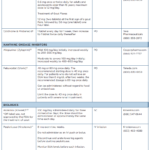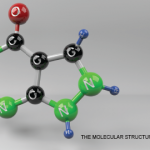ACR CONVERGENCE 2021—More than 40 research abstracts on gout were accepted for presentation at ACR Convergence 2021. While we continue to see evidence of the poor management of gout, we also see new evidence on urate-lowering therapy in both the treatment and prevention of gout. Many of these abstracts challenge us to improve our clinical practice for our patients with gout.
Abstract 0682: Gout management and outcomes during the COVID-19 pandemic in late 2020–2021: A cross-sectional internet survey1
Research by Singh J, Edwards NL
COVID-19 has presented numerous challenges for both healthcare professionals and people with rheumatic diseases. Although much of the initial concern focused on our immunosuppressed patients and how they might fare, we are now seeing evidence that those with other rheumatic diseases, such as gout, are being negatively impacted by the pandemic.
This abstract highlights the role of anxiety and depression in people with gout during the COVID-19 pandemic and the subsequent effect on adherence, difficulty accessing healthcare and getting adequate treatment for gout flares.
This is a timely reminder that people with gout should have an action plan and a ready supply of medication with which to manage their flares.
Abstract 1899: Mortality in patients with sub-optimally treated gout in the Veterans Health Administration: A national retrospective cohort study2
Research by Helget L, et al.
Rheumatologists have long recognized the importance of the treat-to-target urate strategy in people with gout in addressing patient-important outcomes, such as flares and the size and number of tophi.
This large retrospective study reported that all-cause mortality was increased by ~22% in those people with suboptimally treated gout, defined as less than two fills of >90 days’ duration of urate-lowering therapy (ULT) and a mean serum urate concentration of ≥6 mg/dL (0.36 mmol/L), compared with those with optimally treated gout, even after adjustment for comorbidities.
This is another reminder for us to treat our patients with gout with ULT in order to achieve target urate. However, we need further research on the most effective strategies for use of ULTs to achieve target urate and how these can be effectively implemented in primary care, where most gout is managed.
Abstract 1900: Urate lowering therapy in the treatment of gout. A multicenter, randomized, double-blind comparison of allopurinol and febuxostat using a treat-to-target strategy3
Research by O’Dell J, et al.
The majority of the phase 3 trials examining the efficacy and safety of febuxostat used fixed-dose allopurinol, typically 100 or 300 mg daily. However, allopurinol doses >300 mg daily are frequently required to achieve target serum urate, even in those with chronic kidney disease (CKD).
In this randomized controlled trial, people with gout and serum urate concentrations ≥6.8 mg/dL (0.40 mmol/L) were randomized to receive allopurinol, titrated to a maximum dose of 800 mg daily, or febuxostat, titrated to a maximum dose of 80 mg daily. The protocol specified that at least one-third of participants have stage 3 CKD. Thus, the trial design more closely reflects real-world clinical practice with regard to ULT titration, and the study population reflects the large number of people with gout and CKD.
The trial demonstrated that when allopurinol is dose escalated to achieve target serum urate, it is non-inferior to febuxostat. Both ULTs were effective, with 80% of participants achieving target urate, including in those with stage 3 CKD.
Abstract 0680: Gout stigma: Investigating the existence of gout stigma and its impact on patient perceptions and treatment decisions4
Research by Edwards NL, et al.
Gout has long been associated with negative stereotypes and the myth that it is self-inflicted. The management of gout is frequently suboptimal, and patients demonstrate poor adherence to urate-lowering therapies. Although the patient is frequently blamed for poor outcomes, healthcare providers and healthcare systems contribute to poor adherence and outcomes for many people with gout.
In this study of 27 practicing rheumatologists, the impact of clinicians’ perceptions about gout and patients’ personal behavior are highlighted. In addition, despite the efficacy of pegloticase in the management of gout, clinicians perceived biological therapy to be more effective in rheumatoid arthritis (RA) than gout.
As clinicians we need to be aware of our unconscious biases and how they may affect the management of our patients. We need further education of healthcare providers about gout and the role they and the healthcare system play in poor outcomes for people with gout.
Abstract 0675: Urate-lowering therapy for prevention of gout: Prespecified analyses from the CKD-FIX trial5
Research by Tiku A, et al.
The CKD-FIX trial randomized 369 adults with stage 3 or 4 CKD, no history of gout and the risk of CKD progression to receive allopurinol, up to 300 mg daily, or placebo. The mean serum urate concentration at randomization was 8.2 mg/dL (0.49 mmol/L) and the mean estimated glomerular filtration rate (eGFR) was 31.7 mL/min/1.73 m2. A prespecified analysis was undertaken to determine if allopurinol prevented incident gout in this at-risk population.
Interestingly, only 6.1% of participants experienced a gout flare over the 104-week study period, with no difference in incidence between those receiving allopurinol or placebo. However, those receiving allopurinol tended to have the first gout flare during the first 24 weeks of the study when allopurinol was being up-titrated, and those receiving placebo having their first flare after the first 24 weeks.
This study provides further evidence that incident gout is uncommon over a two-year period, even in those with hyperuricemia, and that there is no benefit to the use of ULT to prevent incident gout.
Abstract 0674: A behavioral intervention to improve gout outcomes in African Americans with gout: A 12-month multicenter, randomized controlled trial6
Research by Singh J, et al.
Gout is one of the most common forms of arthritis and disproportionately affects Indigenous peoples and minority populations. Although gout is eminently treatable, it is, in general, poorly managed, resulting in poor outcomes. Indigenous and minority populations are under-represented in clinical trials, particularly industry-sponsored trials, required for regulatory approval.
Although this study showed no benefit from the culturally appropriate gout storytelling intervention, it is heartening to see research specifically focused on this area. As the authors conclude, we need more research to develop effective, culturally appropriate interventions to improve outcomes for Indigenous peoples and minority populations with gout.
Abstract 1897: A randomized double-blind controlled trial of intensive serum urate lowering with oral urate-lowering therapy for erosive gout7
Research by Dalbeth N, et al. (Author’s note: I am an author on this abstract.)
Intensive ULT with pegloticase has improved bone erosion in people with gout. However, pegloticase typically reduces serum urate concentrations to much lower levels than oral urate-lowering therapies do, and it is currently a last-line therapy for most patients.
In this two-year randomized, controlled trial, oral ULTs were utilized in a standard protocol and participants were randomized to a target urate of 3.4–4.9 mg/dL (0.20–0.29 mmol/L) or 1.7–3.2 mg/dL (0.10–0.19 mmol/L). Using oral ULT, the lower serum urate target was more difficult to achieve, the medication burden was substantial, and there was no improvement in bone erosion scores.
The current 2020 ACR guideline recommends a target serum urate concentration of <0.36 mmol/L (6 mg/dL) for all people with gout. And in comparison to the 2012 guidelines, no recommendation about a lower target was made for those with more advanced disease, such as tophi or bone erosions.
Conclusion
The research presented at ACR Convergence 2021 shows that clinicians still have work to do to help our patients manage their gout and that urate-lowering therapy can help in the treatment and prevention of gout.
Lisa Stamp, MBChB, PhD, is a rheumatologist, professor of medicine and the associate dean of research at the University of Otago, Christchurch, New Zealand. She has extensively researched the pathophysiology and management of gout.
References
- Singh J, Edwards NL. Gout management and outcomes during the COVID-19 pandemic in late 2020–2021: A cross-sectional internet survey [abstract]. Arthritis Rheumatol. 2021;73(suppl 10).
- Helget L, England B, Roul P, et al. Mortality in patients with sub-optimally treated gout in the Veteran’s Health Administration: A national retrospective cohort study [abstract]. Arthritis Rheumatol. 2021;73(suppl 10).
- O’Dell J, Neogi T, Pillinger M, et al. Urate lowering therapy in the treatment of gout: A multicenter, randomized, double-blind comparison of allopurinol and febuxostat using a treat-to-target strategy [abstract]. Arthritis Rheumatol. 2021;73(suppl 10).
- Edwards NL, LaMoreaux B, Vitriol J, Magerman A. Gout stigma: Investigating the existence of gout stigma and its impact on patient perceptions and treatment decisions [abstract]. Arthritis Rheumatol. 2021;73(suppl 10).
- Tiku A, Boudville N, Brown F, et al. Urate-lowering therapy for prevention of gout: Prespecified analyses from the CKD-FIX trial [abstract]. Arthritis Rheumatol. 2021;73(suppl 10).
- Singh J, Saag K, Baker J, et al. A behavioral intervention to improve gout outcomes in African Americans with gout: A 12-month multicenter, randomized controlled trial [abstract]. Arthritis Rheumatol. 2021;73(suppl 10).
- Dalbeth N, Doyle A, Billington K, et al. A randomized double-blind controlled trial of intensive serum urate lowering with oral urate-lowering therapy for erosive gout [abstract]. Arthritis Rheumatol. 2021;73(suppl 10).



